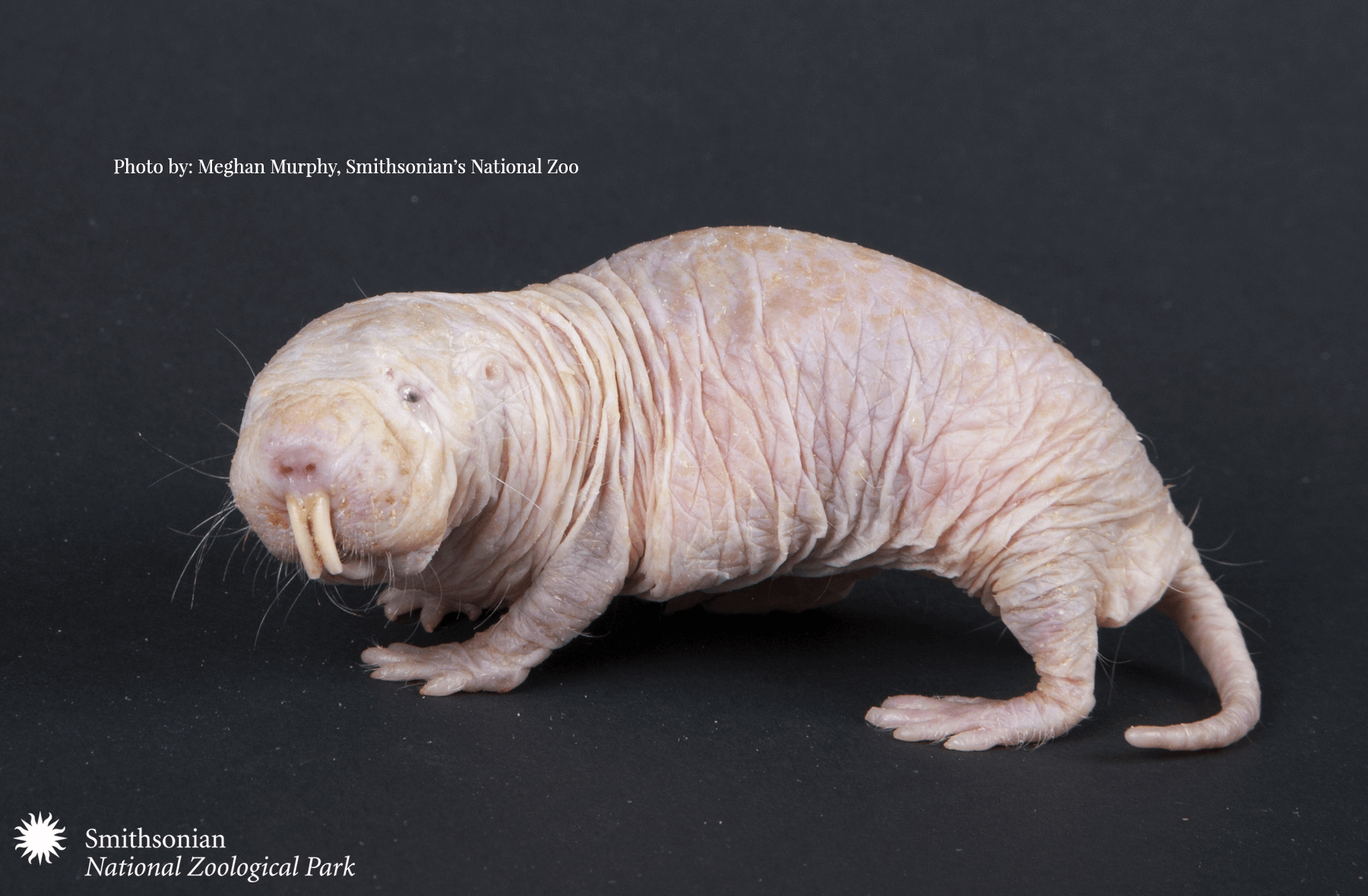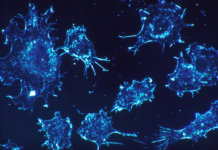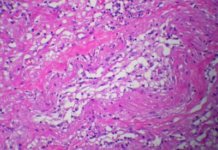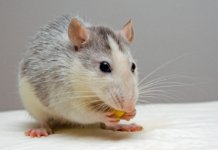Naked mole rat: longevity champion!
Science likes “weird” animal models and the naked mole-rat is no exception. This small rodent from sub-Saharan Africa has fascinated researchers for many years with its surprising longevity and resistance to age-related diseases. Don’t be fooled by its skinless, wrinkled appearance, because this animal is actually a model of youth[1].
The naked mole-rat and its exemplary health
With a maximum lifespan of over 30 years in captivity, it is the longest-living rodent [2] (against 3 years of life expectancy for grey mice and brown rats). Although nothing in this small animal seems to suggest such longevity, it does not seem to fall victim to the effect of time. No cardiac, bone or metabolism issues, these small animals are even very resistant to cancer (only a few rare cases have been described in the scientific literature), a peculiarity which allowed them to be named “Vertebrate of the year 2013” by Science Magazine[3].
The naked mole-rat defies the laws of aging
Fifteen years after the first description of their incredible longevity [4], a study of data from more than 3000 naked mole-rats published in January 2018 in eLife [2] reported that the mortality rate of the small animal does not increase with age (1/10,000 chance of dying per day). This mortality rate remains very stable throughout their lives. This finding means that the rodent is the only mammal to challenge Gompertz’s mathematical law, postulating that the risk of dying exponentially increases with age.
This revelation leads some researchers to believe that aging processes do not affect these rodents, but this idea is not unanimously accepted. Other scientists prefer to say that it is still too early to say [1]. In this sense, it is rather considered that the age-related physiological decline would be delayed or mitigated. Thus, phenotypic signs of aging appear only late in life and naked mole-rats would live 85% of their existence without showing physiological decline [4]. We can note, however, certain age-related physical changes, such as the skin which appears lighter, less elastic and thinner than those of younger naked mole-rats [3].
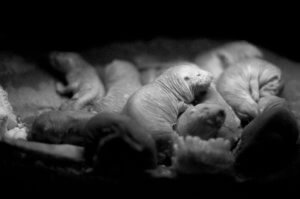
Photo by: Bob Owen
The longevity of these rodents is all the more surprising because they are a small species (about 40 grams), and such a physical appearance does not predestine them to live for that long. When compared with mice of the same size, the naked mole-rat has a 9-fold increase in life expectancy. The same is true for the “age of sexual maturity” factor, since their life expectancy is three times longer than expected. Finally, the breeding females of these eusocial mammals (social distribution of individuals from the same colony between breeding and non-breeding animals) do not undergo menopause and continue to reproduce until a very advanced age [2,4].
The longevity of the naked mole-rat favoured by their environment?
It is also said that their incredible longevity would be favoured by their living conditions. These subterranean animals are protected from predators and the arid climate of the sub-Saharan region where they live. However, their environment also leads to certain deficiencies due to a low-oxygen atmosphere and limited nutrient resources. These environmental particularities lead rats to develop specific characteristics: they can survive for up to 18 minutes without oxygen [4,5].
The life span of the naked mole-rat: an internal affair
The study of certain molecular mechanisms in the naked mole-rat revealed physiological characteristics that would explain its resistance to age-related diseases. The rat-taupe has a low mutation rate in its genome, which can be explained by the low density of CpG dinucleotide on which the mutations of a single base (Single Nucleotide Polymorphism) occur. There is also a strong expression of DNA repair genes, giving the naked mole-rat a high level of genomic stability [6].
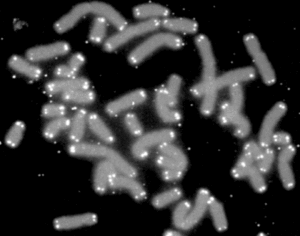
At the same time, it has a high degree of accuracy in the translation of proteins, which could be explained by the unique structure of their ribosomal RNA. In parallel, their proteasomes, the dumpsters of our cells, are boosted and autophagy is also activated, preventing defective proteins from increasing together [7,8].
Finally, a better maintenance of telomeres’ length was observed, thanks to a strong regulation of telomerase expression and its subunit TERT (Telomerase Reverse Transcriptase) which would not decrease with age, unlike in humans.
These mechanisms are described as responsible for the longevity of the naked mole-rat, but they are also responsible for the resistance of these rodents to cancer [4,5]. The intrinsic characteristics of this small mammal leading to its extreme longevity make it a model of choice for the study of the mechanisms that could prevent aging.
References :
[1] Kai Kupferschmidt. Forever young? Naked mole rats may know the secret, Science 359 (6375), 506-507.
[2] J Graham Ruby, Megan Smith, Rochelle Buffenstein. Naked mole-rat mortality rates defy Gompertzian laws by not increasing with age, Ruby et al. eLife 2018;7:e31157. DOI: https://doi.org/10.7554/eLife.31157
[3] https://www.livescience.com/42245-naked-mole-rat-vertebrate-of-year.html
[4] Rochelle Buffenstein, and Jennifer U. M. Jarvis. The Naked Mole Rat – A New Record for the Oldest Living Rodent, Sci. Aging Knowl. Environ., 29 May 2002.
[5] Francisco Alejandro Lagunas-Rangela, Venice Chávez-Valencia. Learning of nature: The curious case of the naked mole rat, Mechanisms of Ageing and Development 164 (2017) 76-81.
[6] I. O. Petruseva, A. N. Evdokimov, O. I. Lavrik. Genome Stability Maintenance in Naked Mole-Rat, Acta Naturae Vol. 9 No 4 (35) 2017, 31-41.
[7] Philip Dammann. Slow aging in mammals – Lessons from African mole-rats and bats, Seminars in Cell & Developmental Biology 70 (2017) 154-163.
[8] Jorge Azpurua, Zhonghe Ke, Iris X. Chen, Quanwei Zhang, Dmitri N. Ermolenko, Zhengdong D. Zhang, Vera Gorbunova and Andrei Seluanov. Naked mole-rat has increased translational fidelity compared with the mouse, as well as a unique 28S ribosomal RNA cleavage, PNAS (October 22, 2013), vol. 110, no. 43, 17350–17355.
Anne Fischer

Author
Auteur
Anne is studying medicine science at the Institute of Pharmaceutical and Biological Science in Lyon and she has graduated with a Bachelor’s degree in molecular and cellular biology at the University of Strasbourg.
More about the Long Long Life team
Anne étudie les sciences du médicament à l’Institut des Sciences Pharmaceutiques et Biologiques de Lyon. Elle est titulaire d’une licence en biologie moléculaire et cellulaire de l’Université de Strasbourg.
En savoir plus sur l’équipe de Long Long Life


